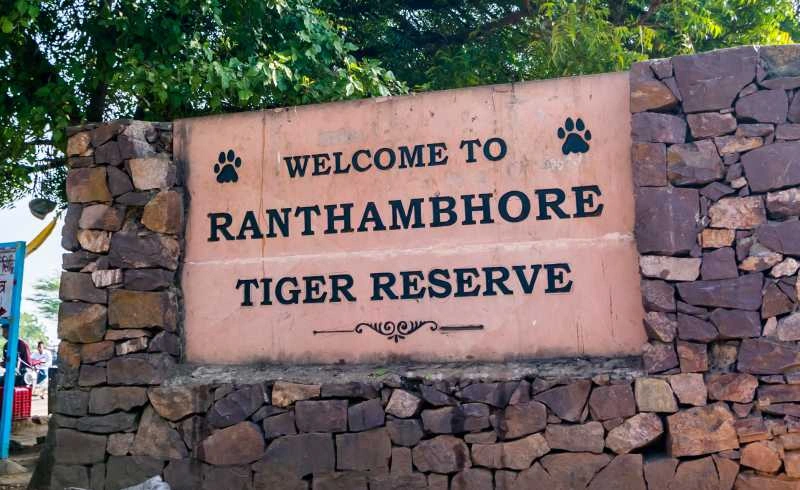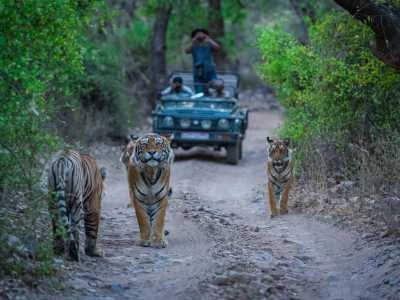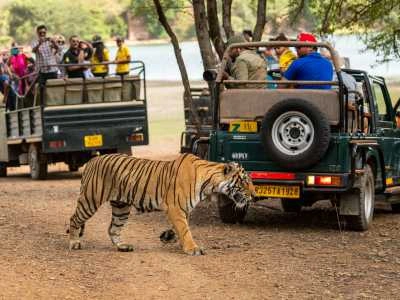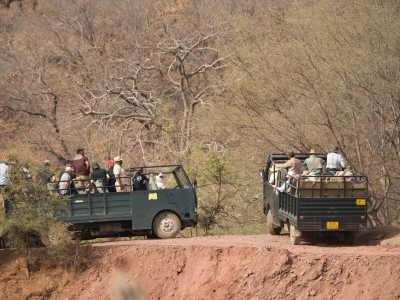
Few wildlife experiences in India compare to the thrill of spotting a tiger in the wild. Nestled in Rajasthan, Ranthambore National Park is one of the country’s most famous tiger reserves and a must-visit for wildlife lovers. A jungle safari in Ranthambore offers not only the chance to see the majestic Bengal tiger but also leopards, sloth bears, marsh crocodiles, and hundreds of bird species.
If you’re planning to embark on this adventure, here’s a complete guide to experiencing the best safari in Ranthambore.

Ranthambore is one of the largest national parks in northern India, covering nearly 1,300 sq km including buffer zones. It’s part of Project Tiger, India’s conservation program aimed at protecting the Bengal tiger.
What makes Ranthambore unique is its combination of rich wildlife and history. The iconic Ranthambore Fort, perched on a hill inside the park, provides a majestic backdrop for safaris. This blend of wilderness and heritage makes a Ranthambore jungle safari unlike any other.
Visitors can choose from two main modes of safari, both offering different experiences:


Tip: For a quieter and closer experience, opt for a jeep safari in Ranthambore if available.
The park is divided into 10 safari zones, and sightings vary depending on the zone.
Each safari booking assigns you a zone randomly, so it’s best to do multiple safaris to increase your chances of spotting a tiger.
Safari timings depend on the season:
Safaris last about 3–3.5 hours. Early mornings and late evenings are the best times for wildlife activity.
To secure your spot, it’s best to book a safari in Ranthambore National Park well in advance.
Since seats are limited, book at least 60–90 days in advance, especially during peak season (October–March).
Additional charges apply for camera equipment, though regular mobile phones and small cameras are usually free.

Sawai Madhopur, the gateway town, has options ranging from budget lodges to luxury resorts. Some resorts even offer guided nature walks, spa treatments, and heritage stays.
A Ranthambore National Park safari is one of India’s most iconic wildlife experiences. Whether you choose a jeep safari for close encounters or a canter ride for a budget-friendly trip, the excitement of tracking tigers and witnessing the raw beauty of Rajasthan’s wilderness is unforgettable.
So plan ahead, make your Ranthambore safari booking, and get ready for an adventure where history, nature, and wildlife come alive together.
You are one step closer to having the best journey of your lifetime! Talk to us, write to us all that you have envisioned for your India trip, and one of our travel experts will connect with you on priority. To help you explicitly we have WhatsApp and Email addresses!